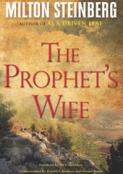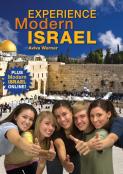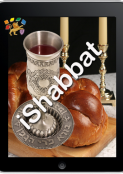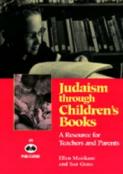- Home
- Play & Learn Home
- Online Enrichment
- Experience Modern Israel
- Israel It's Complicated
- Jewish and Me
- Jewish Holidays Jewish Values
- Jewish Values in Genesis and Jewish Values in Exodus
- Min Ha’aretz
- Our Place in the Universe
- Simply Seder
- The Prophets: Speaking Out for Justice
- Making T'filah Meaningful
- Make, Create, Celebrate
- Yom Haatzmaut Resources
- Hebrew Apps
- About The OLC
- What is the OLC?
- Introduction
- Get Started
- Resources
- OLC Content
- Parent Materials
- See My OLC Classes
- Store
Teaching Adults Prayer Skills
In the Classroom: Teaching Adults Prayer Skills
 |  |
Ways to prepare adults for active synagogue participation, deepen understanding of the service, help parents participate in their child's bar or bat mitzvah service, and present divrei Torah and text study at trustee and committee meetings.
By Barbara L. Dragul and Debra Stahlberg Dressler
Adults want to know how to pray and they want to know what they’re praying. Hineni: Prayerbook Hebrew for Adults can help prepare adult learners for full participation in Shabbat morning services. With this book adults will acquire the skills and confidence to:
Read and recite the Shabbat morning prayers as well as blessings for home rituals.
Understand the meaning and themes of the prayers.
Learn simple Hebrew grammar and recognize 200 important prayer words.
Place prayers and blessings in ethical, historical, and liturgical contexts.
Strengthen Hebrew fluency.
Actively participate in the Shabbat morning prayer service.
Hineni: Prayerbook Hebrew for Adults is effective in a wide variety of formal and informal educational programs. You can use it to:
Prepare adult b’nai mitzvah to lead services. Adults, just like young students, may be apprehensive about being on the bimah in front of the congregation. You can use Hineni as part of a prayer class during your adult b’nai mitzvah course of study to teach synagogue skills such as fluent prayer reading and the "choreography" of the service, while helping learners relate to the theme.
Example:
Explain the role of the Bar’chu as the "call to prayer." Practice reading the prayer. You can show learners when and how to bow during the prayer, if that is your practice. Then discuss the following with the class: What obstacles do you encounter in your life that might prevent you from hearing this "call to worship"? That may have prevented you from celebrating your bar or bat mitzvah before now?Introduce prayerbook Hebrew to Jews-by-choice. Demystify the rituals of the Jewish prayer service and the home by teaching the content of Hebrew prayer —both its background and practice—to adults who are new to Judaism.
Example:
Help learners understand why we say a blessing over the candles, and how we go about saying the blessing. In the chapter on Brachot shel Shabbat, practice the candle blessings and review the explanation about lighting the candles and covering the eyes. Allow students to offer their own explanations. Are there other rituals or "choreography" that they would like explained?Introduce the learning worshipper to the service and deepen regular synagogue goers’ understanding. Offer adult Hebrew study with Hineni in learners’ minyanim as an alternative to the regular service. Focus on one prayer or a series of prayers each week.
Example:
Examine the structure of the Shabbat morning Amidah with its seven blessings. Discuss the theme of each blessing (God’s power in the G’vurot, gratitude in the Hoda’ah, peace in Birkat Shalom). Practice the choreography of the prayer (bow during the Avot, rise up on your toes three times during the K’dushah, take three steps backward at the end).Offer liturgy workshops as part of your adult education program. Build prayer literacy and enhance the worship experience by challenging adult learners to think critically about the meanings of the prayers.
Example:
Examine the theme of "chosenness" in Aleinu. The chapter provides prayer recitation practice as well as a fully linear translation. Explore the meaning of this ancient, and to some, problematic, prayer. Compare the text to the supplement online for the Reconstructionist variation on this prayer at www.behrmanhouse.com/fortheed/itc/026.shtml.Recommend as a study tool for havurot. Independent Jewish learning circles are often looking for resources to explore Hebrew prayer and ritual together. Give them examples from Hineni to enhance religious understanding and practice.
Example:
Build at-home Hebrew fluency and capability. Practice blessing the children in Brachot shel Shabbat at a potluck Shabbat dinner. Take turns answering the question, "Why do you think it is important to begin each Shabbat dinner with these words to our children?" Find out from the havurah members whether their answers change over time or with the ages of their children.Provide text material for retreats. Enhance informal educational gatherings with Hineni’s thematic presentations and ethical discussions.
Example:
Use the chapter on the Maariv Aravim/Yotzer prayers to discuss the theme of creation and how it differs in the evening and morning prayers. Lead services outside and then do a text study session on the prayer language. Share answers to the questions, "Do I experience these prayers differently in a natural setting than I do in the synagogue?" "What might this difference reveal to me about the purpose of blessing creation and the Creator?"Present divrei Torah and text study at trustee and committee meetings. Enrich the work of congregational lay leaders with targeted explorations of Jewish ritual and thought.
Example:
Use synagogue business meetings as an opportunity to extend Jewish learning, and make Jewish practice a part of all synagogue functions. Open each meeting with a reflection on a prayers’ themes and how it relates to the work the committee does to support the ritual life of the community. Discuss, say, how the Avot prayer speaks of knowing God through membership in the Jewish people. Do members of the committee feel that their work enhances or challenges their relationship with the Divine? How and why?Kick off a technology workshop. Invite families in for a prayer technology workshop and demonstrate Behrman House’s online and CD-based resources to enhance prayer education at home.
Example:
Visit Behrman House’s website at www.behrmanhouse.com for "Click And Learn Prayer at Home." This complimentary internet resource allows students to practice their reading skills outside of the classroom and, in effect, extends classroom time. Click on the prayer excerpts to hear how the words are read while you practice on your own.
Hineni Interactive CDs (volumes 1, 2, and 3) use modern teaching technology to review and practice Hebrew at home. Students can click on Hebrew words and prayers to hear them being read out loud, complete interactive exercises, such as clicking on blocks to build prayer phrases, and play Hebrew video games. Hineni Interactive will help make learning Hebrew fun for all students, both kids and those who are just kids at heart!Help parents prepare for their child’s bar or bat mitzvah. Parents are likely to be most receptive to learning when their own children are studying to become bar and bat mitzvah. Take advantage of their willingness—and availability—by inviting them in for special programs or study sessions to help them feel more at ease on the big day.
Example:
The chapter on Birchot HaTorah takes parents step-by-step through the Torah service and the rituals of aliyot and Torah reading. Reflect with parents on their memories of their own b’nai mitzvah or their desire to celebrate one as an adult. Compare Moses’ summation of the history of the Jewish people in Deuteronomy with parents’ own instructions to their children at special events and times of transition. How is this lifecycle event like the receiving of the Torah on Sinai?Offer parents an opportunity to study prayer parallel to their child’s religious school studies. Parents and students can study Hebrew at the same time—though not necessarily in the same class—with students using the children’s edition of Hineni and adults using their version. They can then combine their knowledge to enrich understanding. (Watch out, parents can often be more competitive than their kids!)
Example:
Prepare a Shabbat workshop for parents and students. Study the chapter on Brachot shel Shabbat so all family members can recite the blessings and understand the themes. Have the families create their own "Shabbat box" with the blessings, candles, homemade Kiddush cups or hallah covers, and recipes or crafts to help prepare for Shabbat. Consider matching up families and have them schedule a Shabbat dinner together to try out their new skills. Discuss ways to maintain connections between families throughout the year.
By using these and other techniques to engage adults—and families—in prayer study, you will help connect congregants to the tradition, nurture knowledgeable participants in Jewish life, and encourage active synagogue engagement.
Barbara L. Dragul is Director of Education and Lifelong Learning and Debra Stahlberg Dressler is Rabbinic Intern at Isaac M. Wise Temple in Cincinnati, OH.











